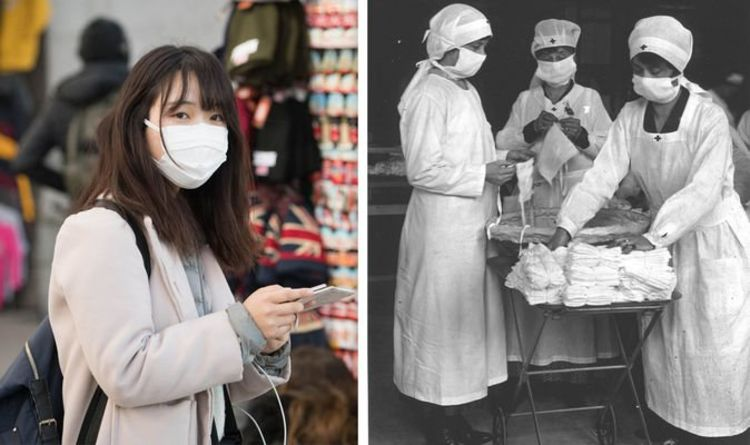
(Image: PA/GETTY)
There are two basic attitudes one can have towards life. Some look at the world and say, "I want to live", while others say, "I don't want to die". A culture is kind of an aggregation of all the people's attitudes. There will always be a portion of society composed of people who want to live, flourish and expand their horizons. And there will be others who don't want to die, that crave safety and protection against all manner of real and imagined harm. The majority will set the tone for the culture.
I believe historians will look at two pandemics, the Spanish Flu of 1918 and the COVID-19 of 2020, and wonder what happened in the hundred years between the two. They will certainly recognise a dramatic difference in the reaction to a pandemic of each culture.
The Spanish Flu was devastating. Reading descriptions of the symptoms, the manner of death and its suddenness, it makes you glad that you didn't live through those times. But it also gives you pause. People continued to go about there lives. I'm sure they took precautions where they could. But by and large, they acted as if they wanted to live. The predominant sense of of life in that culture was one of human flourishing. Sure there were hardships. But the majority were focused on achievement, moving forward. That is what defined their lives, not tragedy.
This mindset drove progress for decades, even as the culture accumulated bad ideas. The standard of living has increased across the world between 1920 and today. And despite what many say, it has increased most for the poorest in the world. Trade has become more open and global. Malnutrition has declined and lifespans have increased during this time. It is plain to see that the original outbreak, which lasted a year or so, had no lasting effect on humans. I can only conclude that these were a people who wanted to live. I suspect future, honest historians will reach the same conclusion about the culture and people of that age.
Today we face a pandemic, similar in scope, but arguably less dramatic in consequence. There may be several million deaths, which is terrible. But all the focus is on avoiding death. We are told to "stay home, save lives". We categorise businesses as essential or non-essential without regard to the question "Essential to whom?" We congratulate ourselves on staying 6 feet apart and discuss the "new normal". Some put lipstick on this pig saying, "we're all in this together". I see all of this as masking a culture of fear. Fear that if we don't all obey the rules, we will not be able to avoid death. There is this pervasive sense that somehow each individual is responsible for the health of everyone else on the planet. If you don't wear a mask, you are responsible for spreading this disease. We have literally stopped living.
I believe this what historians will draw from studying the first 20 years of the 21st century. They will conclude that the pandemic simply drew out this craving for safety, this need to avoid every little discomfort in life, and amplified it. They will then notice how this craving built overtime. They will see its origins the response to the Great Depression, shortly after the first pandemic. They will notice how the social programs from that era eroded the independent spirit and personal pride of its citizens. It will become self evident that as these programs expanded to cover more and more, that the culture shifted to one of dependence. The response to the Spanish Flu was characteristic of a culture that valued independence and liberty, a culture that wanted to live. I fear historians will say the response to COVID-19 is characteristic of a culture that feared risk and craved safety, a culture that wanted to avoid death.
I don't know how things will turn out. But a culture that wishes to avoid death is not one that fosters flourishing. It very often leads to stagnation and decline.

Wise words, thank you!